The initial apprehension upon entry to Ei Arakawa’s exhibition took a few moments to subside. It was swiftly alleviated upon realizing that it is not an exhibition in the typical sense but more of a journey through a cardboard-constructed maze: a metaphorical commentary surrounding the parallels, juxtapositions and complexities of child-rearing and art-making.
Stenciled lettering on each side of the walls of the tall cardboard labyrinth revealed declarations in green, red, purple and black. The initial statement boldly declared “ARTISTS SHOULD NOT HAVE A CHILD.” This set the inaugural theme of the exhibition, juxtaposed with baby mobiles hanging from beams across the top of the maze. Statements that follow include “I’M NOT GOING TO REMEMBER HOW TO PAINT AGAIN,” “ARTIST-PARENTS AS INSECURE VOCALOIDS” and “MUSEUM, BE FLEXIBLE! ARTIST-PARENT.COM.”
Passage through the maze is accompanied by strange electronic music from multiple sources that effortlessly carries through the cardboard partitions. Ambient sounds were interjected with genderless “vocaloid” voices singing strange phrases. Helpful gallerists supply press releases and lyric sheets as the viewer continues through the maze. This serves as an a-ha! moment, revealing that the statements on the wall were the satirical and humorous (though pertinent) words which were also sung by the synthesized voices. The lyrics, written by Arakawa, suggest the struggle between simultaneously carrying out roles of both artist and parent; the music score was composed by Arakawa and Celia Hollander.
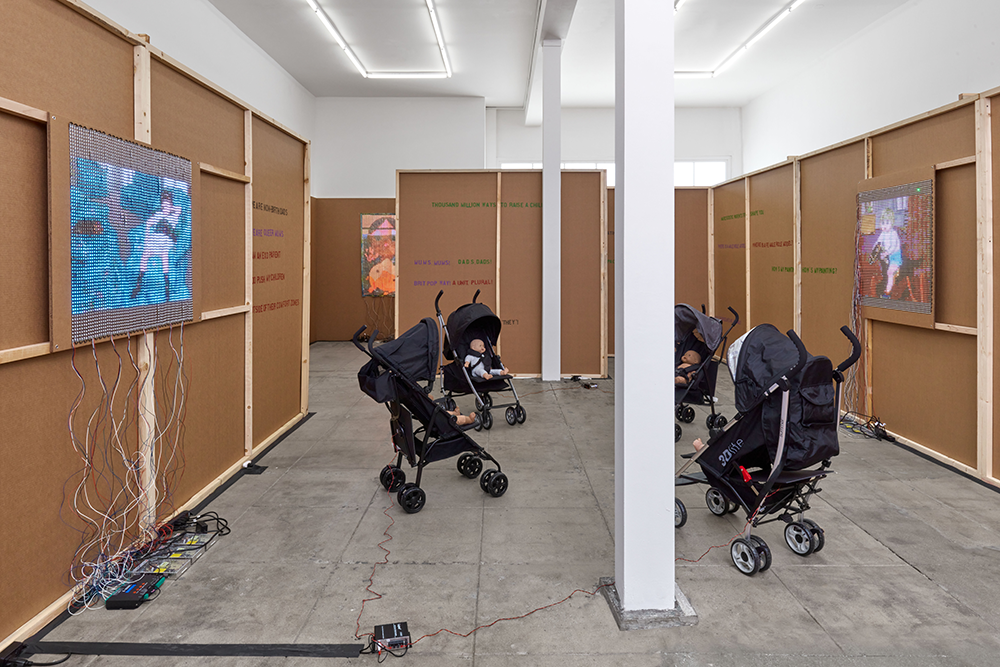
Ei Arakawa, Installation view. Courtesy Overduin & Co.
The hallways of the maze opened into three separate rooms (perhaps wombs) that offered chairs for contemplation and listening. Both in the hallways of the maze and in the lounging rooms were replicas of famous paintings by American artists, both living and dead, reproduced by thousands of LED lights. The images included works by Mary Cassatt, Nicole Eisenmann, Alice Neel, Laura Owens and Trevor Shimizu. The connecting factor between all the LED paintings were that they were famous scenes of childhood and/or parenthood from art history; the title of the show comes from Laura Owens painting “Don’t Give Up” and was placed in the largest room of the maze.
Included in this large room was a quartet of carriages occupied by alternating toy babies—one white, one brown, one white, one brown. As if the words were not enough, the installation of these plastic babies overtly—yet humorously—proclaimed the exhibition a paean to parenthood. Surrounding these carriages were the statements “WE ARE NON-BIRTH DADS WE ARE QUEER MUMS” indicating Arakawa’s own “psychic preparation for planned queer parenthood” (from the artist statement). Most artists of child-rearing age couldn’t help but deeply connect with the absurd truth, humor and insecurity embedded in each aspect of this exhibit. As the art historical references suggest, one strategy for being a parent and artist is to make work about children. But for Arakawa, “I’M NOT THAT IMPRESSIONIST.”







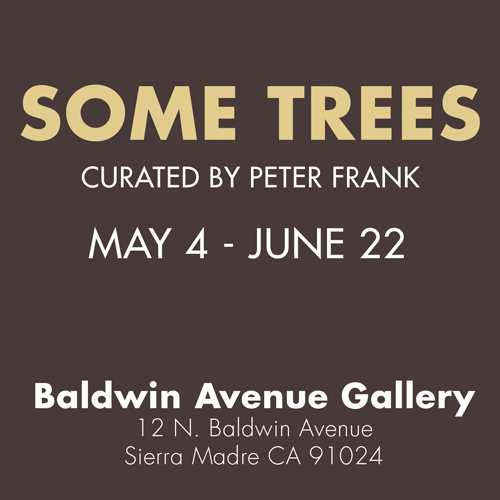



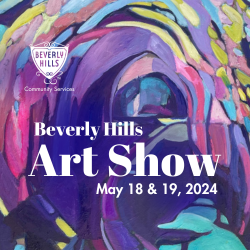


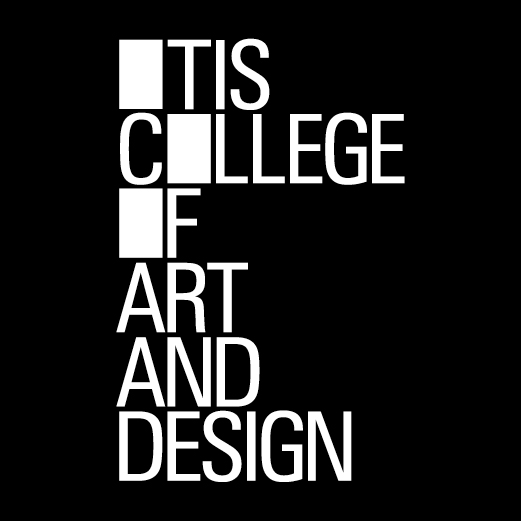
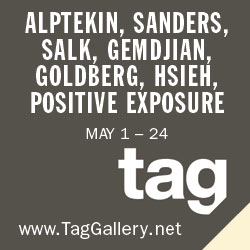
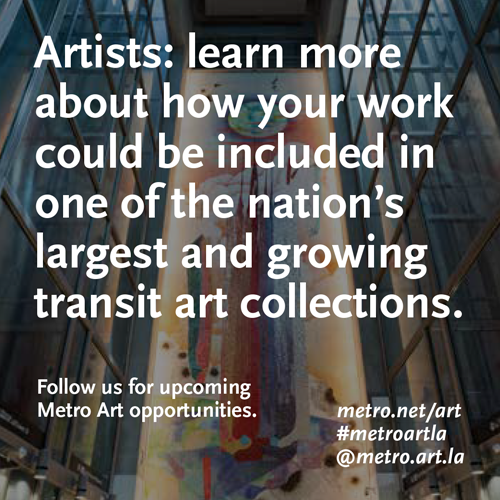
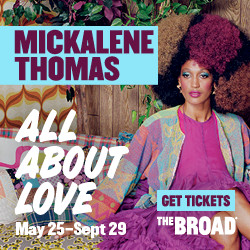


0 Comments